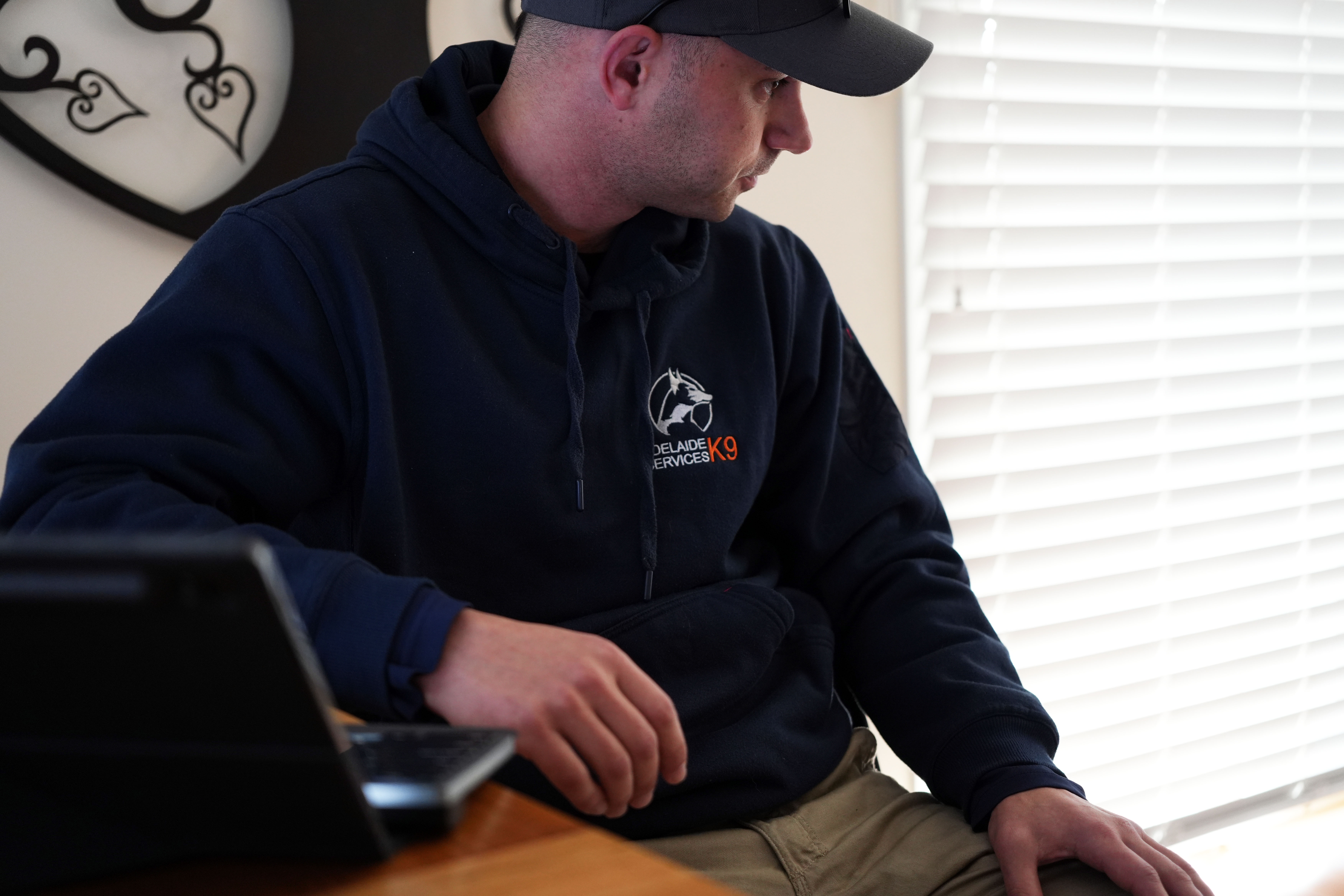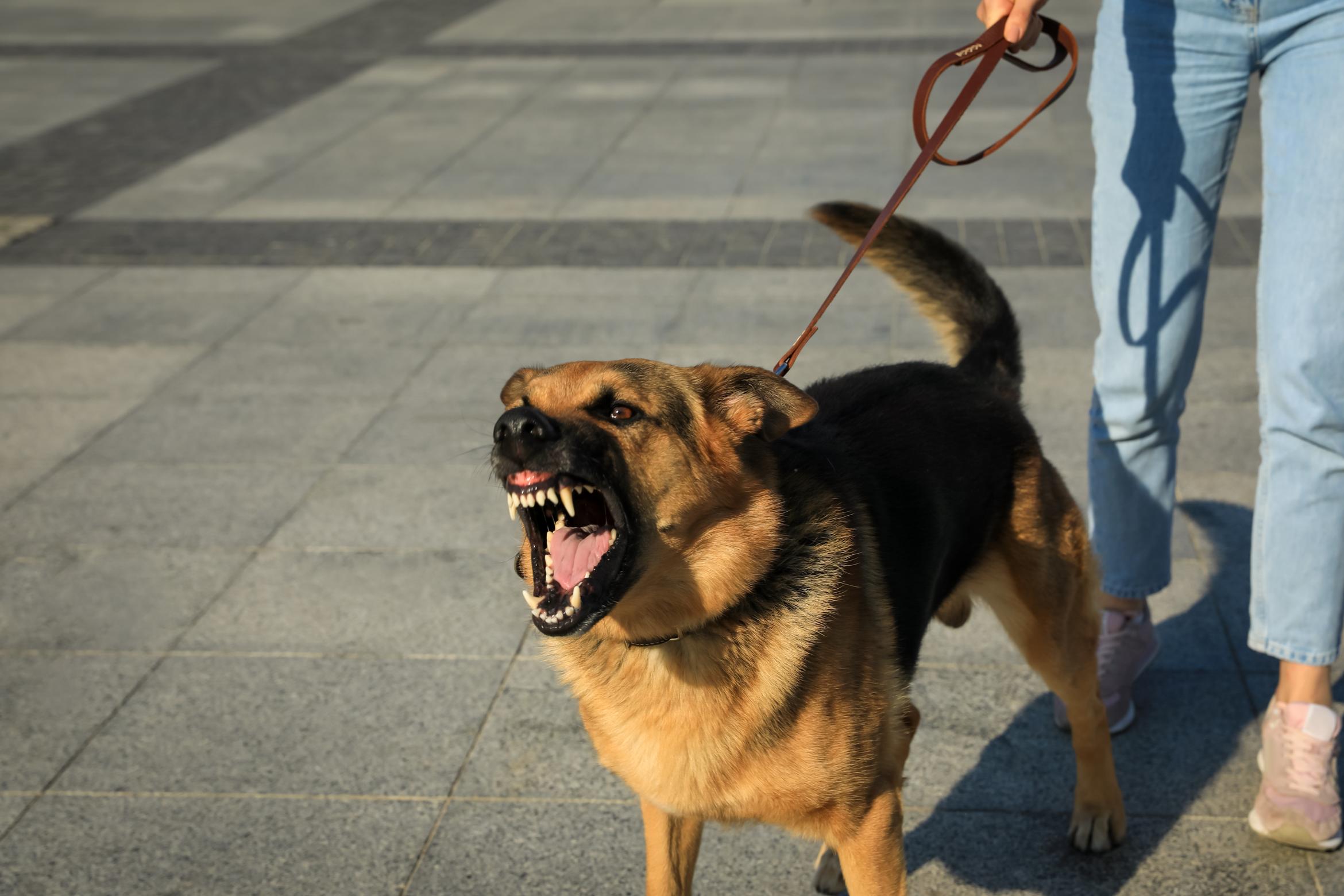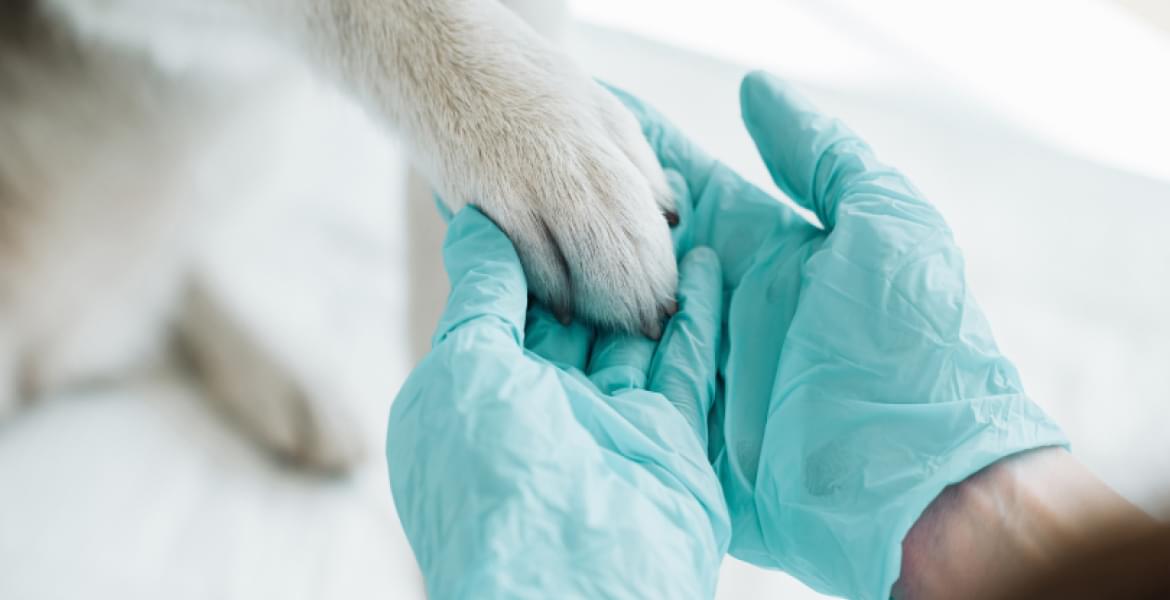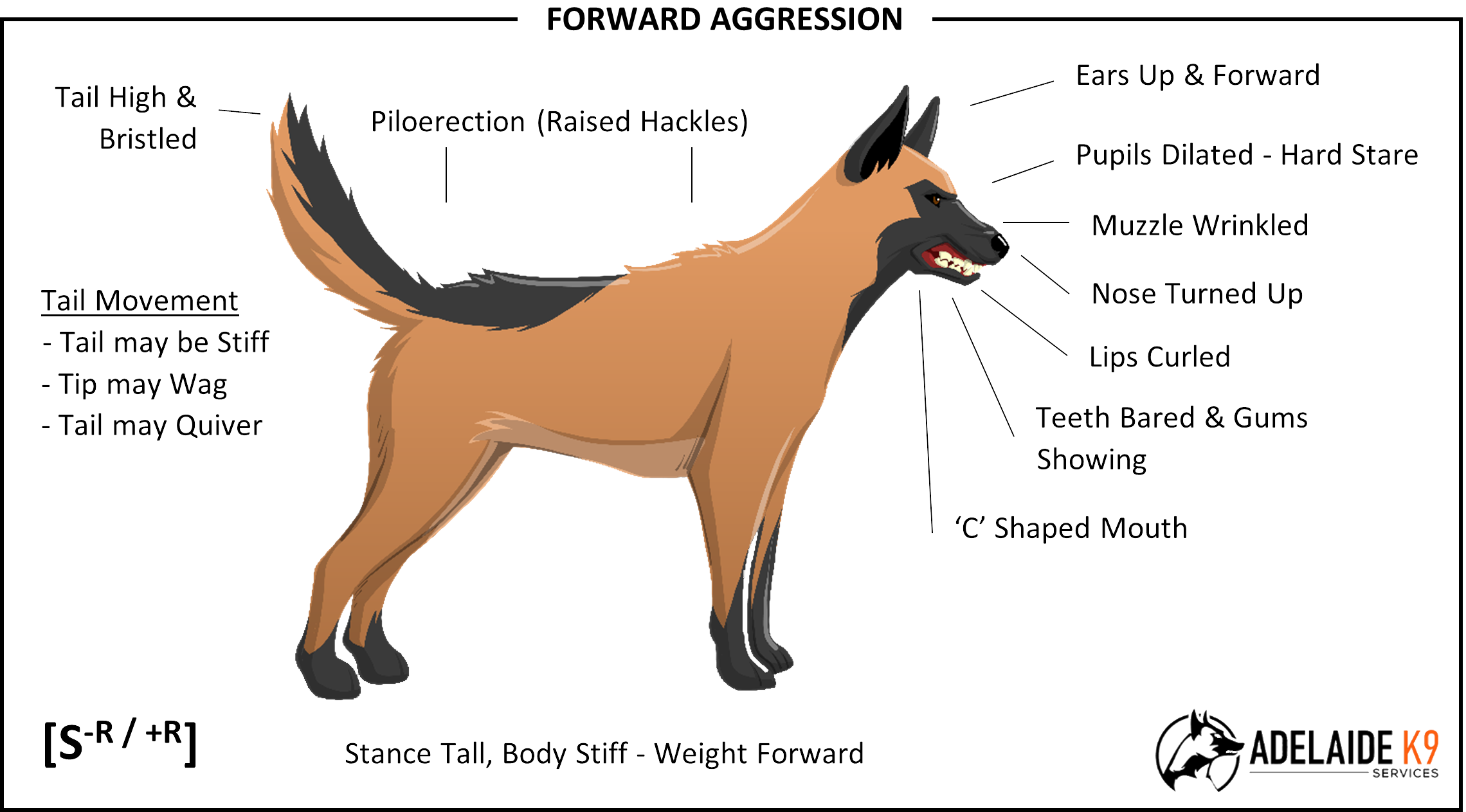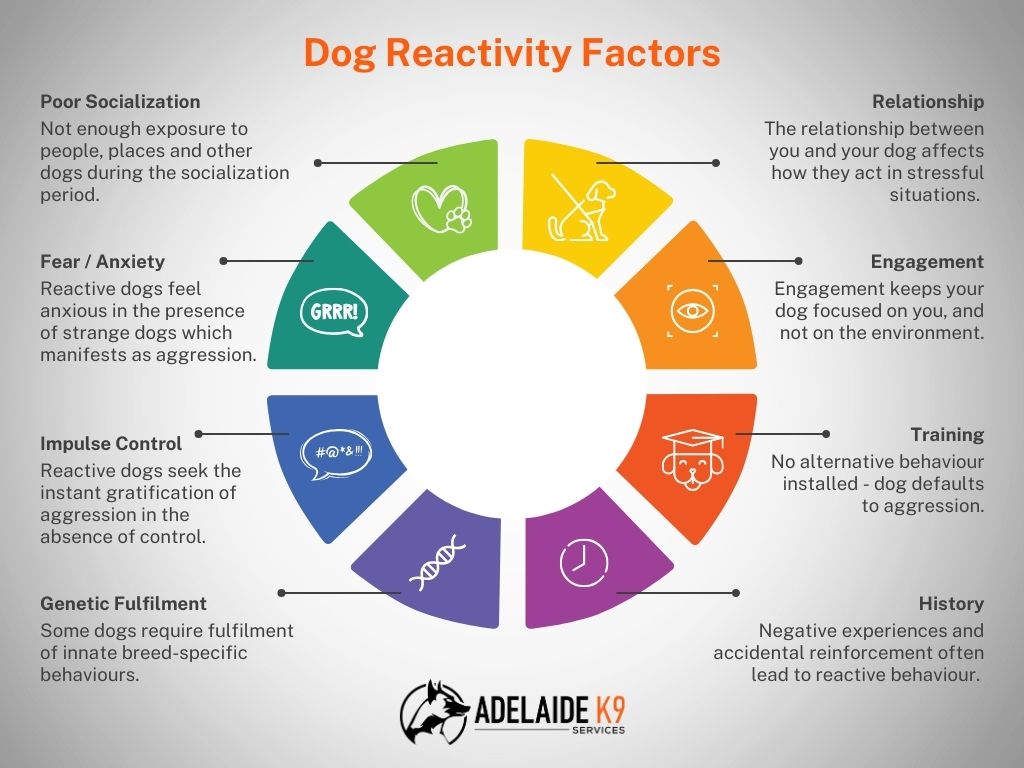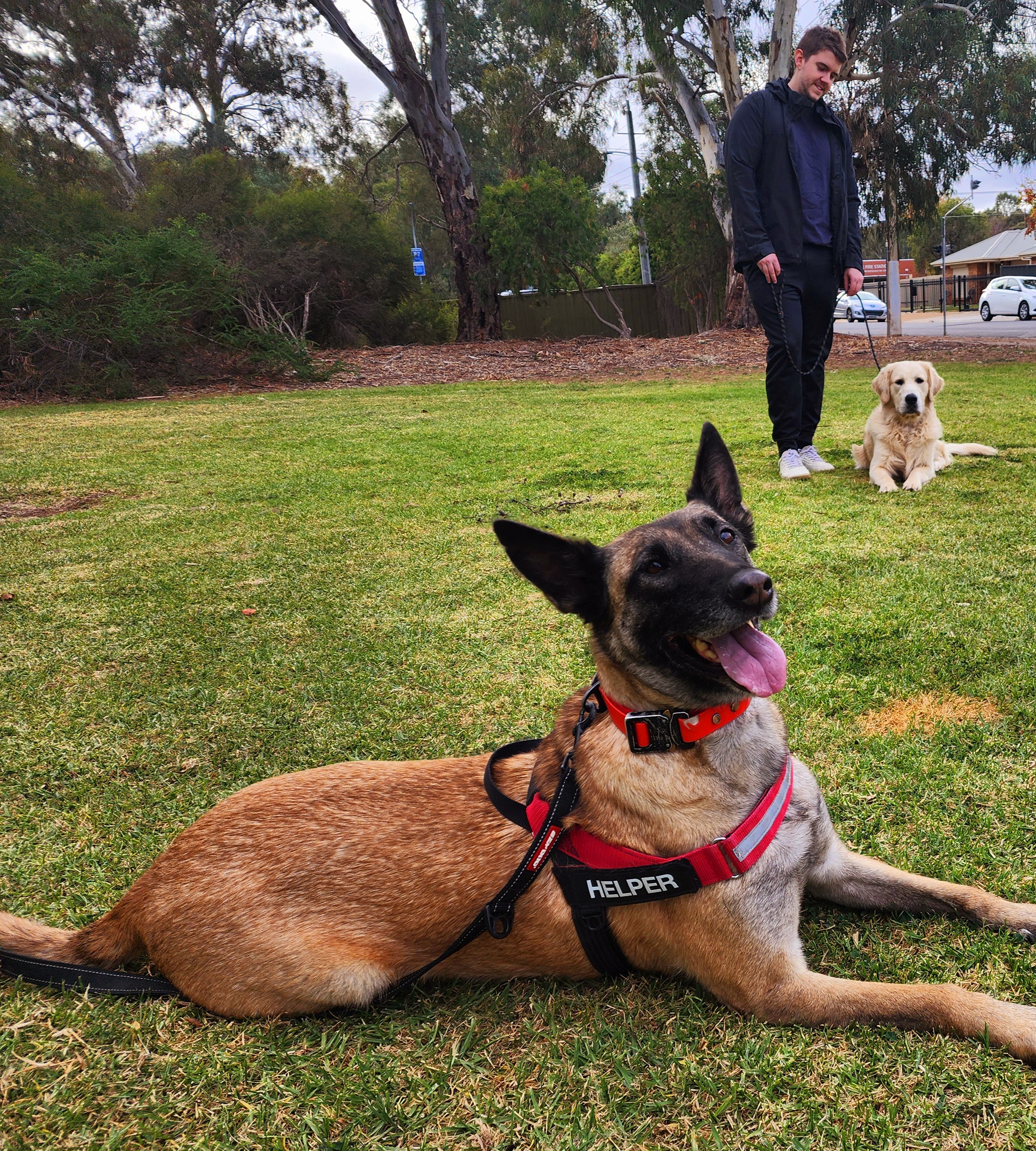Aggression vs. Reactivity
Definitions:
The RSPCA defines aggression as “A threat, challenge or attack that is directed towards one or more individuals (dog or person)”.
A definition for Reactivity is more elusive, however most agree it is "An abnormal (generally excessive) response to a stimulus, including a dog or person".
What they look like:
Aggression and Reactivity can look identical - there may be growling, lunging, snapping and biting - the difference is the intent. A dog which growls and lunges towards a non-threatening dog or person to make them go away but does not bite when they have opportunity (they may even go into avoidance or submission) is being reactive. A dog which will bite when given the opportunity is aggressive.
How to tell them apart:
The most conclusive way is through examining the dog's bite history. Consider these real-life examples from some of our clients:
My dog is great around other dogs, but when he's on the leash he pulls so hard to get over to them. It's a workout taking him for a walk. When I don't let him greet the other dog, he lunges, spins around in circles and does this high pitch bark. People are terrified but he just wants to say hello.
My dog growls and lunges at other dogs when we are out walking - making her difficult to control. One day she saw a small white fluffy dog across the road and lost her mind. She lunged so hard I fell over and let go of the leash. As soon as I dropped the leash, she stopped and turned around. She stayed with me, and the other dog walked past. I couldn't believe it.
Our dog is a beautiful boy. One day our daughter's friend was visiting, she has met him before, so I thought nothing of her patting him. She was patting him on the side, which he seemed to be enjoying. Then she leant over him putting her face close to his. Before I could tell her not to do that he turned and bit her on the face requiring plastic surgery. It happened so quickly.
Our two little dogs go crazy when we have visitors. They have nipped at people, and one bit me on the hand while I was trying to control them causing a deep laceration. They are medicated but that doesn't seem to help.
In these examples the first dog is obviously just reactive, there is no intention to harm the other dog. The second dog is also reactive, choosing not to aggress towards the other dog when given the opportunity. That doesn't mean that they will never bite, but they are less likely to in similar circumstances. The second two both have a serious bite history, so they are by definition aggressive.
What if I'm not sure?
Don't panic - you are not alone! A lot of our clients have no idea if what they are seeing is reactivity or true aggression because their dog has never had the opportunity. This is normal and doesn't change the way we manage the behaviour. We may have some insight from our own observations, but sometimes we can't be sure either. That is one of the reasons why we collect so much information when we on-board you on the first session! If there are any concerns regarding the safety of people or other dogs, we will take the necessary precautions.
To summarise:
Aggression is a non-scientific word used to describe a wide range of social behaviours, including hard staring, lip curling, barking, growling, lunging, snapping, nipping and biting. These behaviours can be directed at people, dogs or inanimate objects (think vacuum cleaner). Whether your dog is truly aggressive or only reactive is something you may need help to determine. There are some common types of aggression, including being on leash (leash aggression), fear or anxiety (fear aggression) or social status (forward aggression). The truth is none of these definitions are very helpful. Most times there is more than one trigger for the aggressive behaviour.
Aggression is behaviour, and like all other behaviour it accesses reinforcers which maintain it.
The majority of aggression cases are maintained by subtracted reinforcement - this means that an undesirable stimulus is removed, stress is relieved, and the behaviour is reinforced. The typical reactive dog experiences fear or anxiety in the presence of a strange dog or person, sometimes both. In response they behave aggressively. The threat display may look very convincing, but the objective is to make the dog or person move away. The increased distance alleviates their anxiety and aggression is reinforced. True dominance is very rare.
